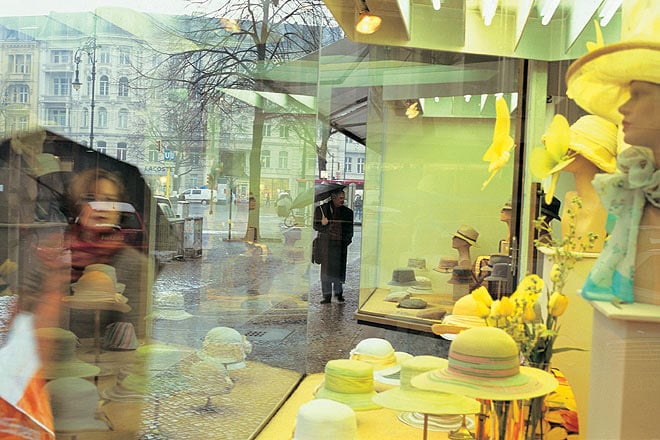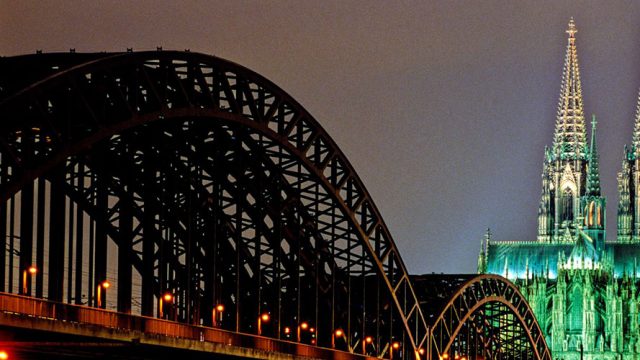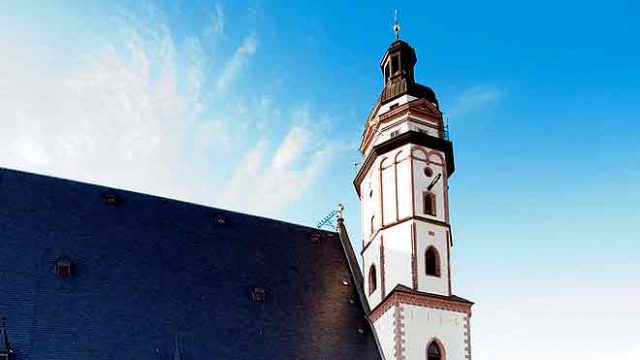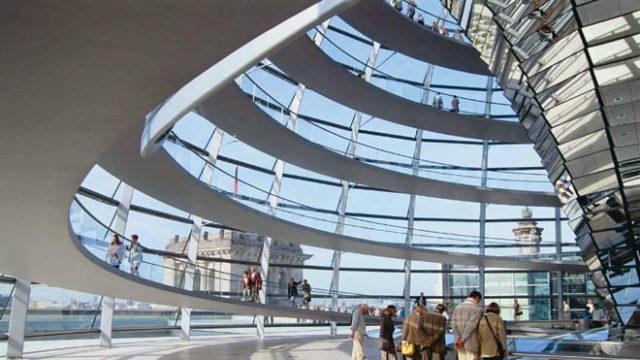Among European cities, Berlin is a parvenu; bristling with ambitious intent, keen on
When we went to Berlin in the winter, an assignment that took in Munich and Frankfurt as well, the ubiquity of the crane was first startling then mundane. Berlin, as Alexandra Richie has pointed out in Faust’s Metropolis, her appropriately monumental history of Berlin, is a city perennially in flux, a city made and remade throughout its calamitous, scarred history. Berlin is Germany’s only metropolis; all human life is here. Other German cities are cultured, wealthy, homogenous. Frankfurt, like eyes shielded behind sunglasses, is inscrutable; Munich is proudly, stubbornly provincial. Berlin has the ragged edges and barely contained anarchy of a spreading ink stain on a spotless handkerchief. From West to East, it is several cities, plutocratic, dull and elderly in parts, young, vital, cosmopolitan in others.
Berlin is made up of 12 boroughs or districts (bezirk in German), each so self-contained as to have a distinct character. You, like we did, should head immediately to Mitte, or more precisely Alexanderplatz, the iconically urban hub of Alfred Döblin’s Weimar-era novel (adapted to film by Fassbinder) and erstwhile East Berlin’s most important square. Alexanderplatz is unprepossessing, the Communist-era buildings impressively ugly. It is dominated by the TV Tower, or Fernsehturm, a nearly 370m-high tower marked by a revolving sphere that contains a restaurant with vertiginous views of Berlin. When I was there, the sphere was in the process of being turned into a football in time for the 2006 FIFA World Cup, the panels coloured bright pink in acknowledgement of Deutsche Telekom, the Tower’s owners.
Mitte, like so much of Berlin, is unrecognisable from a decade ago, says Peter, our taxi driver; the taxi, like all Berlin taxis a Mercedes the colour of custard, was an expensive indulgence forced on us by the cold, so bitter my nose and ears couldn’t have felt more fragile had they been made of glass. Mitte, which was in East Berlin, has now been expanded to include the boroughs of Tiergarten (containing the city’s central park; Victory Column; Bismarck Memorial; stately Bellevue Palace, home of the German president; and countless statues) and working class Wedding. It is tourist central, replete with cheap and plentiful accommodation and most of Berlin’s most famous sights. Here is Unter den Linden, the city’s storied limetree-lined baroque boulevard, an astonishing stretch of imperial, marmoreal Prussian pomp along which is everything from the Brandenburg Gate to the Reichstag, to the Berlin State Opera, the green-domed Cathedral of St Hedwig, Humboldt University with its gates of gleaming gold, and the reconstructed Hotel Adlon.
Here too is Museum Island, where many of the most important of Berlin’s 170 museums are located. The northern half of the Spreeinsel, an island on the River Spree, was in the mid-19th century an area devoted to the arts and sciences, its collections of art and archaeology added to by successive Prussian kings before being turned into a public foundation at the end of World War I. Many of the museums, including the vast Bode Museum, are still in the final stages of reconstruction. Still, coachloads of tourists arrive every day to have their pictures taken in front of these magnificent buildings, to absorb the entire tradition of European (no, the world’s) art in an afternoon’s sightseeing. Perhaps the only legitimate response to such absurdity is indeed to pull funny faces in close proximity to Greek statuary.
Bordering Mitte is the borough of Friedrichshain-Kreuzberg where we head first to the East Side Gallery, site of over 100 paintings by artists from around the world painted onto the longest existing section of the Wall. The first paintings were being done already in 1989, the brushstrokes as articulate, if less forcefully so, as the swinging of sledgehammers. There is graffiti too, mostly on the riverside section, and the inevitable daubings of morons — “Bubbadoo woz ere”, “Pogon Szczecin holligans from Poland”, that sort of thing.
Cold War nostalgia is booming business, judging by the crowd of young tourists at Checkpoint Charlie on Friedrichstrasse, once the only point at which you could cross from East to West Berlin. In a microcosm of the Cold War, it was at Checkpoint Charlie that American guns faced Soviet ones. All that remains and in its present surroundings, Berlin’s main shopping street choked with traffic, tourists and retail outlets, more cute than forbidding is a white hut, some sandbags and the famous sign bearing the terse legend ‘You Are Now Leaving The American Zone.’ There are companies that will rent particularly fetishistic tourists a Trabant, that risible East German car that is now a kitsch icon, to drive around the city. This ironic attachment to the anachronistic accoutrements of Communism is affectionately sent up in the sentimental Good Bye, Lenin! Wolfgang Becker’s 2003 film in which a young East Berliner whose mother was in a coma when the Wall fell fights a sterling rearguard action to keep his mother’s world (and in this way his mother) alive in their shabby apartment. A Cold War aside: Peter also took us in his taxi to the Glienicker Brücke, the bridge from West Berlin to Potsdam in East Germany on which the Americans and Soviets exchanged spies on nights shrouded in more fog than a prog rock band on a reunion tour. Visitors today will find the notion of midnight spy exchanges even more ridiculous than they might in an airport paperback because of the landscaped parkland and lavishly appointed houses around the bridge.
But Berlin is not just monuments and tourist kitsch. Kreuzberg is the city’s Turkish quarter and is cartoonishly vibrant. The area is responsible for much of Berlin’s reputation as Europe’s most attractive city for the young and radical. We’re taken to see Kunstlerhaus Bethanien. A former children’s hospital, it is now an arts centre and squat. In vans parked in the alley between sprawling buildings, I meet several middle-aged artists in T-shirts that like the artists themselves have seen better days. They are devoted squatters, battling a city keen to sell the Kunstlerhaus complex, determined to preserve a bohemian life unimaginable in cities like Paris, London or Manhattan. These artists remind me of Cahit, the protagonist in Fatih Akin’s Head On (a stunning, acrid movie about Turks in Hamburg, though I imagine it could just as easily be set in Berlin), the moment when he is jumping on the table in his rubbish tip of a flat with the huge poster of Siouxsie Sioux sellotaped to the door, screaming “Punk is not dead! Punk is not dead!”
In the Chagall Café in nearby Prenzlauer Berg, exactly the sort of hipster haven you’d expect to eschew a Starbucks franchise for an eccentric café named after an artist, I meet Darya, a green-eyed Russian who moved to Berlin from Siberia. Darya has lived in Singapore and for a short while in Mumbai and Delhi too. “Berlin is such a fantastic place to live,” she says, showing me around her moth-eaten neighbourhood, “because here you can really be anything you want to be. I know people say that about all cities, but it’s still possible to live here cheaply and that’s not true in the rest of Europe or even Germany. You don’t have to think always about money here and so you can turn your mind to art, to music, even to just hanging out in cafés watching people on the street.” She shows me a local concert venue and ad hoc gallery, one of half a dozen within a couple of minutes walk of each other — the metal door is hanging off its hinges, only patches of discoloured wall is visible in between the graffiti, leaflets and dog-eared posters advertising concerts, readings, exhibitions, club nights and DJs. It is in such buildings, in the interstices of the mainstream, that young artists in Berlin are trying to build their own version of Weimar Berlin, that brief, gilded period between wars when in Berlin was gathered an extraordinary proportion of the world’s greatest talents.
The antithesis to all of this is Potsdamer Platz, once Europe’s busiest crossing and condemned after World War II to being a weed-strewn no-man’s land. Potsdamer Platz is once again the centre of Berlin, transformed, under the supervision of Renzo Piano, by such architects as Richard Rogers, Arata Isozaki, Rafael Moneo, Helmut Jahn and Hans Kollhoff. The bill was underwritten by Daimler-Benz and Sony. That such a collection of luminaries could produce so unremarkable a city centre, just another jarring confluence of steel, glass and height, is baffling. But the Potsdamer Platz project — still ongoing, the main station, Berlin’s new Hauptbanhof, touted by the authorities as “an architectural and logistical wonder…describable only in superlatives”—is just the latest grandiose plan in a city historically plagued by them, the most notorious being Hitler’s lunatic ‘Germania’ vision. Potsdamer Platz’s shopping malls and atriums, its cloud-bruising buildings run counter to what I saw as Berlin’s sidewalk culture: the street-level cafés with huge windows; the quirky Savigny Platz bookshop under a railway line where a train passing overhead causes the books to judder gently on the overstocked shelves; the neighbourhood pastry shops where you can buy Berliners, and croissants filled with hazelnut and chocolate; the do-it-yourself art galleries and cultural centres.
Berlin, for all its forced grandeur, is a wonderful city because it continues to attract new people, continues to inspire their enthusiasm and energy and work, and makes it possible for them to live their lives any way they choose—qualities the sophisticated cities it has always wanted to emulate lost long ago.
The information
Getting there
I flew to Berlin from Delhi on Lufthansa. There are no direct flights from India to Berlin. A return ticket from Delhi to Frankfurt costs Rs 54,000 (plus taxes). Lufthansa also operates daily flights to Frankfurt from Mumbai, Bangalore, Chennai and Hyderabad. For current information on schedules and fares see www.lufthansa-india.com. Berlin is just over an hour’s flight from Frankfurt and there are several daily flights between the cities.
Where to stay
The Berlin Tourism website (www.berlin-tourist-information.de/english) is an excellent place to begin a hotel hunt: it has listings of over 400 hotels and guesthouses.
> If money is no object and location and history is what you’re after, book a room at the reconstructed Hotel Adlon (from 380 euros; +49-30-2261111,
www.hotel-adlon.de). The hotel was built with the help of Kaiser Wilhelm II in 1907 and within three years was proclaimed, with a typically Berlin flourish of super-latives, the most beautiful and most luxurious hotel in the world. The hotel was damaged in World War II and was closed in the 1970s. It was rebuilt in its original location opposite the Brandenburg Gate after unification.
> The style-conscious traveller should try Lux 11 (from 115 euros; +49-30-9362800, www.lux11.com) in Mitte. This is a 72-room, slick boutique hotel. It has no real amenities such as room service or a round-the-clock concierge but the location is terrific, a short walk from Museum Island, and the rooms are exquisite—all suede, stone, creamy walls, and shiny chrome in the neat kitchen. There is also an Aveda spa, all-white fusion restaurant and designer store.
> Mitte is also the place to look for hostel accommodation. A typical hostel, like the Hostel Adler (singles from 29 euros; +49-30-2829352, www.hostel-adler.com) on Friedrichstrasse, is within a 15-minute walk of the major attractions.
What to see & do
> Berlin’s historical core is located around Mitte. There is Unter den Linden, of course, and such famous sights as the Brandenburg Gate, the Reichstag with its new Norman Foster dome, the Prussian magnificence of Gendarmenmarkt, the Wall and Checkpoint Charlie
> There are the museums on Museum Island, the collections of which are among the most extraordinary in the world. Berlin’s 170 museums range from the Pergamon to Daniel Libeskind’s sobering Jewish Museum, the Bauhaus museum, and the many small gems such as the former Bendlerblock now converted into a memorial to Stauffenberg and the anti-Nazi movement’s failed attempt to assassinate Hitler.
> Berlin and the surrounding province of Brandenburg are studded with gorgeous palaces and parks — the Schloss Charlottenburg, to name one. Tiergarten, Berlin’s central park, is stunning. Visit the Berlin Tourism website (www.berlin-tourism-information.de/english) for a comprehensive list of sights.
> Berlin has an intricate network of Imperial-era canals linking nearly 200km of waterways on the rivers Spree and Havel. A boat ride is the most picturesque way to see the city. Book a boat tour through the Berlin Tourist Office near the Brandenburg Gate.
Where to eat & drink
Berlin’s signature street dish is the mystifyingly popular currywurst, a fat frankfurter smothered in sauce and curry powder. The currywurst is so popular a museum dedicated to it is scheduled to open this autumn on Ku Damm.
Restaurants in Berlin, obviously, run the gamut from neighbourhood places serving Boulette (fried meatballs) to Eritrean restaurants serving spicy beans and banana beer. Berlin’s huge Turkish population means the doner kebab is ubiquitous. For haute cuisine try Margaux on Unter den Linden — plush, sophisticated and suitably expensive. There’s also the highly tipped chef Tim Raue at Restaurant 44 in the five-star Swissotel in Charlottenburg.
The Berlin drink is Berliner Weisse, a weak, sour beer often drunk with fruit syrup. The oldest beer garden is Prater in Prenzlauer Berg, open since 1837.
Where to shop
> The famous Kurfürstendamm or Ku Damm was the major commercial street in West Berlin. In unified Berlin Ku Damm shares its status as the city’s premier shopping boulevard with Friedrichstrasse.
> It’s a good idea to explore the many side streets that branch off from Ku Damm. High-quality German designers such as Jil Sander can be found on Leibniz Strasse for instance, and Savigny Platz too is full of interesting, upmarket shops, particularly Marga Schöller, an outstanding bookshop with a wide selection of books, particularly film-related, in English.
> Friedrichstrasse, which runs from Mitte through to Kreuzberg, forms an important junction with Unter den Linden. Friedrichstrasse is lined with chic boutiques. In the streets around the beautiful Hackescher Markt station you will find independent designers and hip second hand shops. There is also the Hackescher Höfe complex with its cafés, boutiques and galleries.
> KaDeWe is a Berlin institution. The biggest department store in Europe, it is 60,000 sq m of shopping nirvana. There are also shopping malls such as the Europa Centre near the War-damaged Kaiser Wilhelm memorial church, and the Arkaden in dreary Potsdamer Platz.
> You can also visit the street markets in Prenzlauer Berg. The Turkish market in Maybachufer is worth a visit.
Top tip
Unlike people in most continental European countries, many Germans do speak English. But in Berlin, if you do not speak German, Turkish and Russian are probably more useful than English. Lucky then that Berlin has Exberliner, a sharp, intelligent listings magazine entirely in English. Berlin’s answer to Time Out means that English-speaking visitors are never at a loss for tips on which restaurant, bar or club to go to, which gallery to visit, or which movie to catch. Listings apart, the magazine carries thoughtful articles and columns on life in Berlin and interviews with city personalities as well as visiting writers, artists, musicians etc. For just two euros, Exberliner thrusts you immediately into the heart of Berlin’s cultural life. It is an invaluable aid.
Germany
Leave a Reply
You must be logged in to post a comment.





